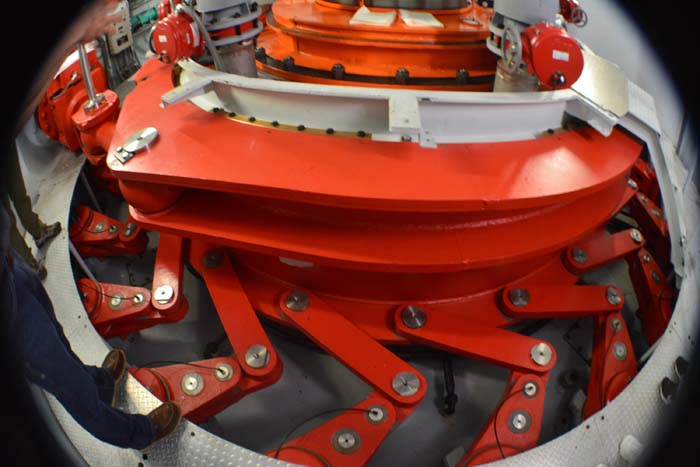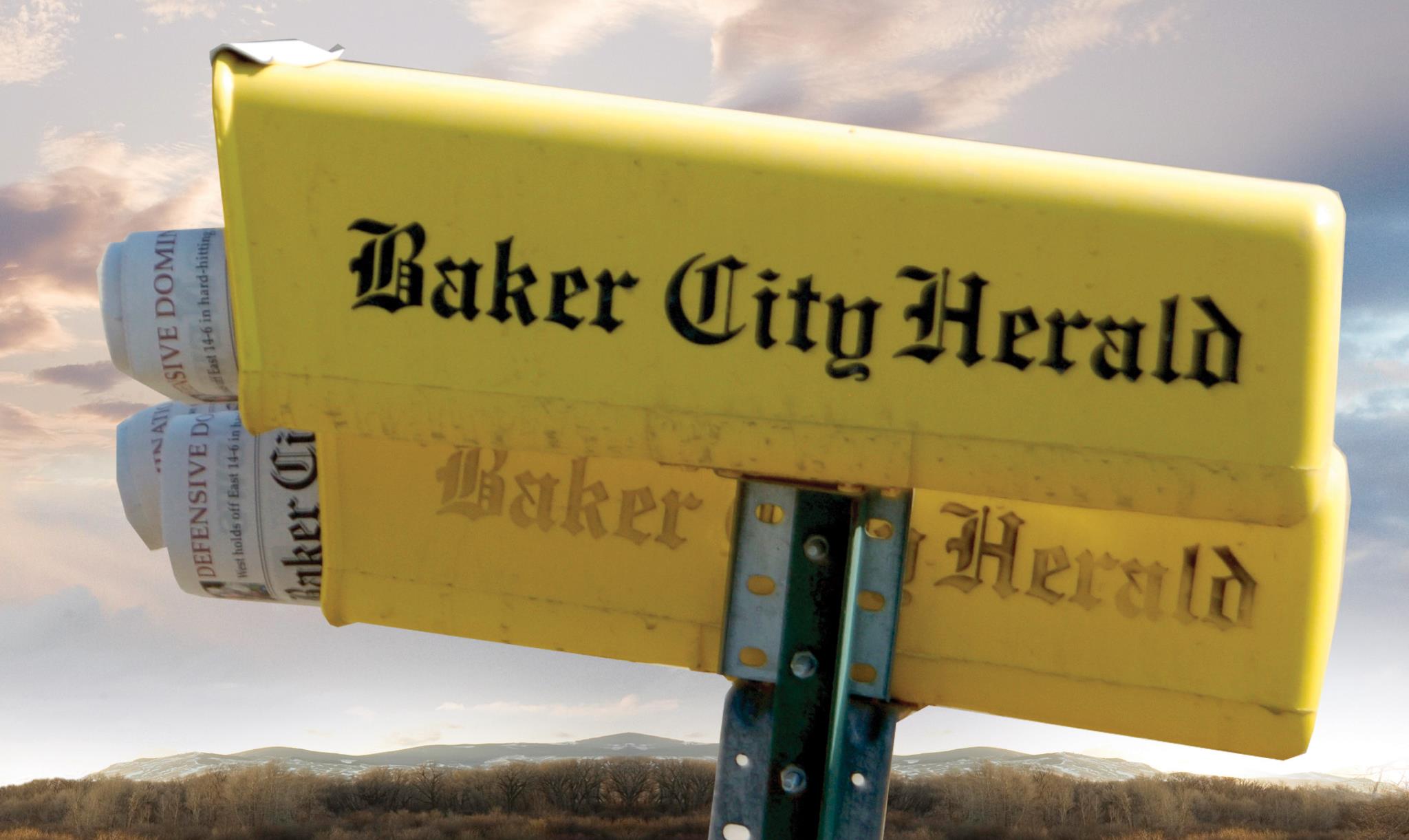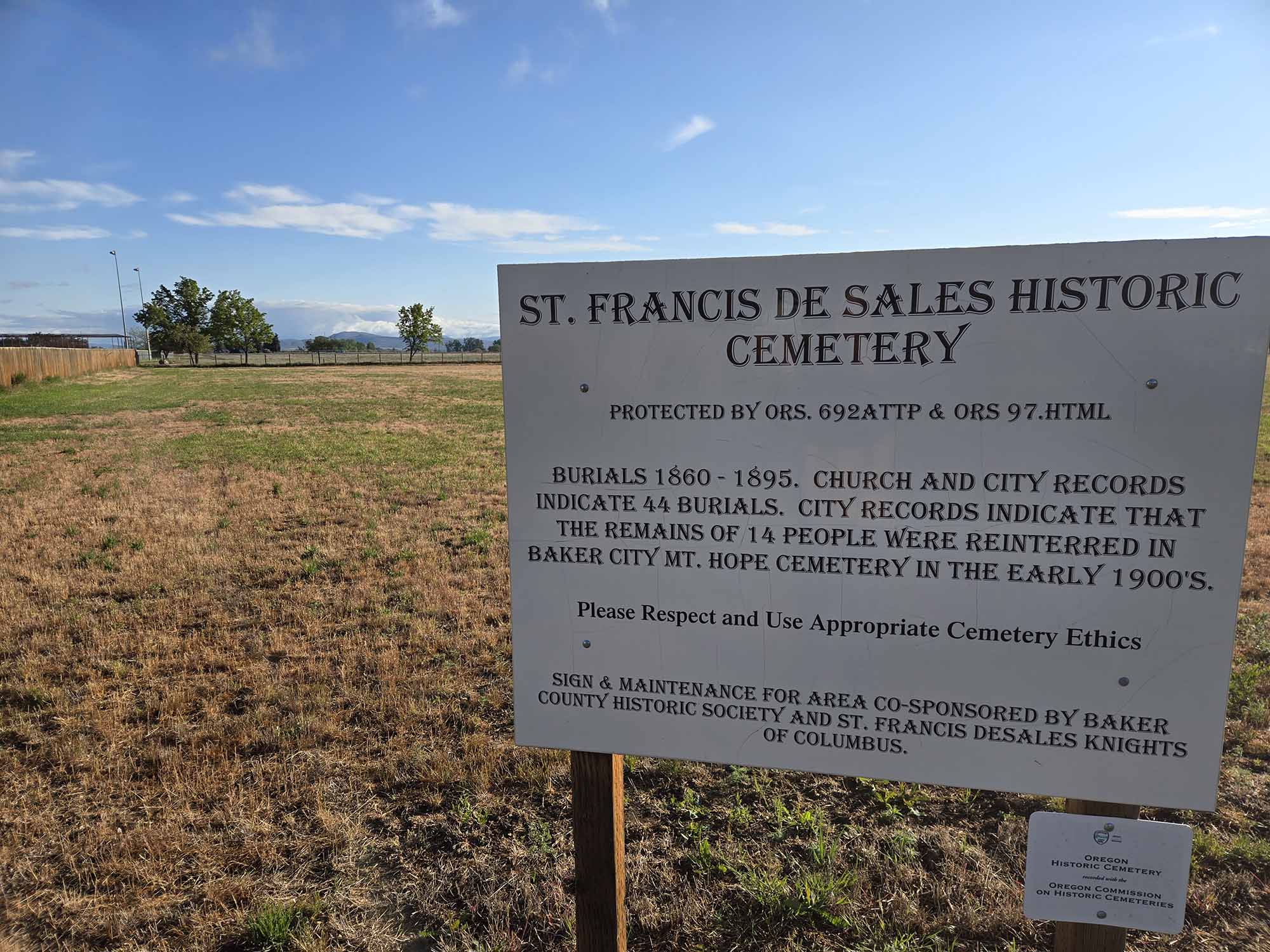Idaho Power’s Hells Canyon dam complex readies for crucial relicensing
Published 12:00 pm Friday, June 30, 2023

- Servo armatures above the blade housing of the No 5 turbine in Brownlee dam allow it to open and close to adjust the generator speed.
Editor’s Note: This is the first in a two-part series about Idaho Power Company’s effort to acquire a new federal license for its Hells Canyon Complex, which consists of Brownlee, Oxbow and Hells Canyon dams. The second part will run in the July 4 e-edition and in the July 6 issue.
Trending
This summer Idaho Power is approaching crucial milestones in its two-decade bid to acquire a new federal license for the company’s three dams in Hells Canyon.
The Hells Canyon complex — Hells Canyon, Oxbow and Brownlee dams — has been the subject of an intensive environmental survey over the past 20 years or so. The dams, built in the 1950s and 1960s on the Snake River east of Baker City, are a major source of power for the Boise company.
Entering the final steps into gaining its Federal Energy Regulatory Commission (FERC) license, Idaho Power is putting significant focus on three major conditions:
Trending
• Water quality, including pollutants, temperature and oxygenation.
• Ecosystem impacts, such as fish toxicity and reproduction.
• Improving on riverside recreational features.
This summer Idaho Power expects to receive a Supplemental Environmental Impact Statement from FERC following two decades of research into the effects the dams and reservoirs have on the environment. Idaho Power officials said this is a crucial component of the new license, which would authorize the company to continue to operate the dams for at least another half century.
FERC issued Idaho Power a 50-year license for the project in 1955. Although the license expired in 2005, the federal agency has renewed the license annually. Idaho Power submitted a 25,000-page application for a new license in 2003.
In early June the company conducted a two-day media tour of the Hells Canyon complex.
Environmental issues
“Our biggest issues are our fish, and our water quality,” said Brett Dumas, Idaho Power’s director of environmental affairs, as reporters toured the top of Brownlee dam. Below, carp as long as an adult’s arm idled near the spillway. In a natural setting, carp can be as healthy as any fish, but a dam’s presence affects them in indirect ways, as well as many deep-water species, including the Snake River’s famous sturgeon.
Dumas said researchers have come to understand a great deal about the food chain effects of the dams. Mercury, in particular, a toxic metal that can come from natural and manmade sources, can accumulate in fish tissues.
“Brownlee is deep. 200 to 300 feet deep,” Dumas said. “Unfortunately, this is a great assist for microorganisms.”
Bacteria can consume mercury that accumulates in sediment at the bottom of the reservoirs.
“These organisms are attached to it and they’re digesting that sediment,” Dumas said. “And in their process of doing that they convert mercury to methylmercury.”
When these organisms, called cyanobacteria, are consumed, methylmercury accumulates upward into the food chain, a process known as bio-accumulation. Dumas says that this problem isn’t unique to the Hells Canyon ecosystem, and that the scale of it extends to many natural dams and lakes.
Dumas said Idaho Power has been keeping an eye on the mercury levels in various species that eat fish, including bald eagles.
To improve water quality, Idaho Power has tried to control temperature and oxygen levels in the reservoirs, with a goal of reducing cyanobacteria levels.
The bacteria can also lead to algae blooms that can be harmful to humans and pets that swim in or ingest the water.
Cyanobacteria also consume oxygen, reducing the concentration of oxygen in the water and potentially harming fish, which need oxygen just as people do.
Action at the dam
Entering the interior of Brownlee dam, the hum underfoot gives a constant reminder of the forces at work. Turbines numbered 1 through 5 turn on meter-wide axles of exposed spinning steel.
Brownlee is the farthest upstream of the five dams and the largest power producers of Idaho Power’s 17 hydroelectric plants, rated at 675,000 kilowatts.
This is where Idaho Power makes its first intervention in water quality.
“That heat you feel is electricity being made,” said Itsy Tanaka, regional hydroelectric manager for the Hells Canyon complex.
The two downriver dams — Oxbow, rated at 190,000 kilowatts, and Hells Canyon at 391,500 — combine with Brownlee to produce enough power for about 600,000 customers.
The three-dam complex is maintained by about 90 full-time workers.
Tanaka illustrated the aeration system that injects oxygen into the water that comes from the turbines. Water diverted into the turbines tends to have lower oxygen levels than elsewhere in the river.
“We suck air in through the turbine to add oxygen to the river, coming out on the bottom of the turbine,” Tanaka says over the roar of the machinery. “This is what we do to mitigate what the dams do, increase fish habitat and make the water better. This is really awesome engineering.”
Looking below the dam you can see the intensely blue water as it leaves the dam. The aeration, besides adding oxygen, cools the water, stalling the propagation of cyanobacteria.
Idaho Power also mitigates heat buildup by increasing river velocity and depth, planting shade trees and developing flood plains.
Combatting cyanobacteria is a challenge, Dumas said, as municipal wastewater and runoff from fertilized fields can contribute to its formation. The Snake River’s tributaries are all sources.
“You’ve got the Burnt River, you’ve got the Powder River, you’ve got Weiser, then Boise, all of those areas are bringing nutrients and sediments in, and Brownlee deals with it all,” Dumas said. “So, boom, there goes your oxygen because you got all this stuff coming in that’s decomposing, and then as that settles now you got a perfect environment for the mercury.”
Many of the pollutants are beyond Idaho Power’s direct control, however, as farm and industrial waste naturally flow into the reservoirs.
Calcium, phosphorus and minerals from fertilizers build up around the turbine chambers and other parts of the dam, requiring regular removal.
Dumas said Idaho Power works with the U.S. Army Corps of Engineers in tracking water quality. That federal agency, which operates many publicly owned dams in the West, will be involved in the relicensing process for the Hells Canyon complex.
“For years we’ve gone upstream to work with the ag communities to try and reduce the amount of phosphorus and sediments coming into the river and all the tributaries,” Dumas said. “We have to meet water quality standards so we’re going to have to figure out how to mitigate that.”
“Our biggest issues are our fish, and our water quality.”
— Brett Dumas, director of environmental affairs, Idaho Power Company
Idaho Power Company’s Hells Canyon Complex consists of three dams on the Snake River, the border between Oregon and Idaho — Brownlee, Oxbow and Hells Canyon. Unlike most of the major hydroelectric dams on the Snake and Columbia rivers, Idaho Power’s dams are privately owned. Brownlee and Oxbow dams are in Baker County. Hells Canyon Dam is in Wallowa County.
• Brownlee: Completed in 1958, the farthest upriver, about 10 air miles east of Halfway.
• Oxbow: Completed in 1961, about 13 miles downstream from Brownlee.
• Hells Canyon: Completed in 1967, about 21 miles downstream from Oxbow.









